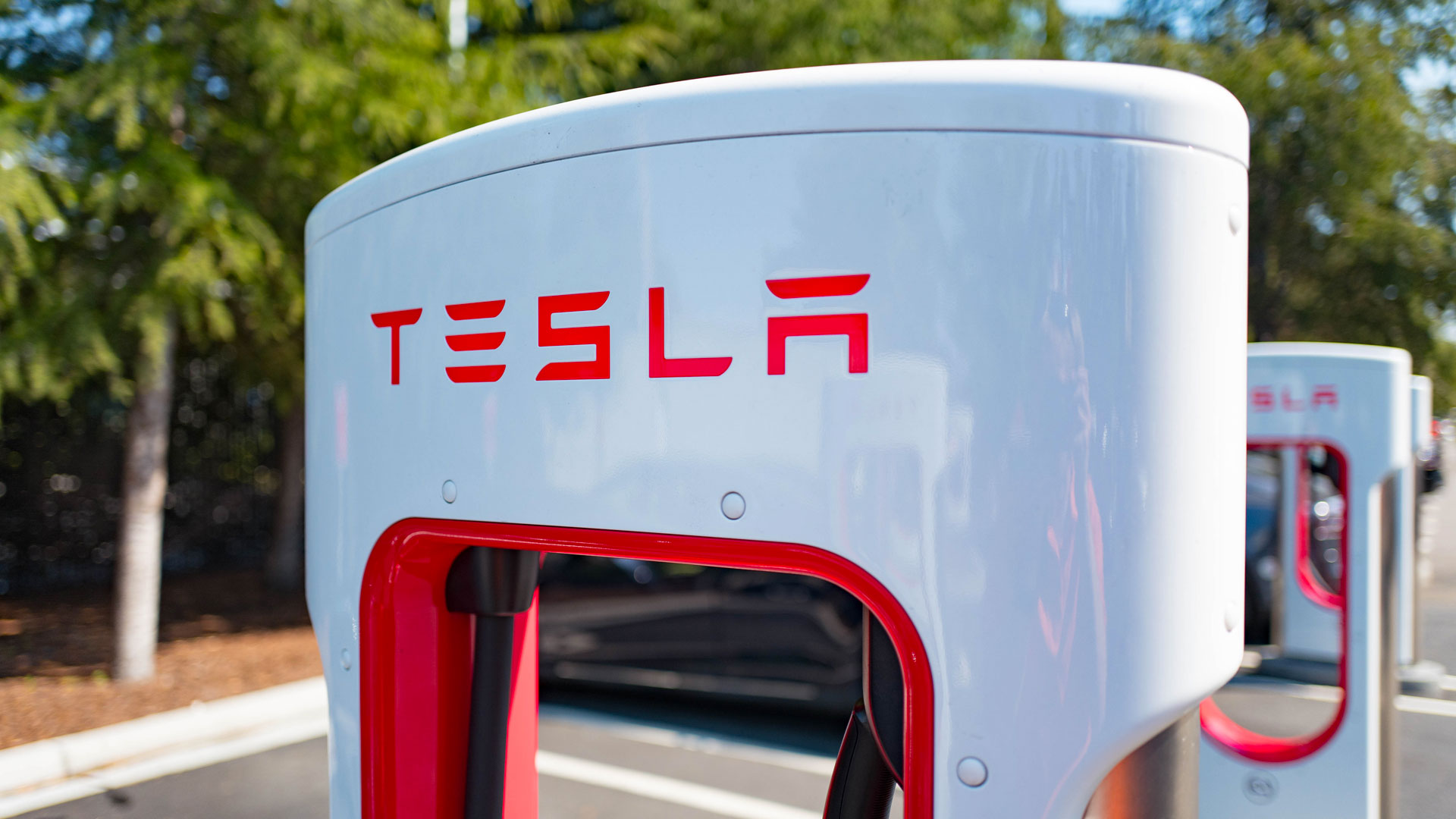Your EV fast charging is about to get massively better, and here’s why
Long EV road trips are about to get easier.

Owning a new electric car is probably one of the more exciting old and new experiences in the book. It's old because cars are a known thing but also new because, well, there's that completely different fuel thing. With that excitement comes some anxiety about how you'll find a charging station. They're still not as abundant as gas stations and, oh, there's this standards thing. An issue that is only just now being addressed.
None of this is slowing down the industry or consumer interest in these EVs. A week doesn’t seem to go by without another exciting new EV being announced or launched. And while Tesla still dominates the market (both in sales and expertise), the competition is heating up. In fact, there are now plenty of compelling EVs available from other manufacturers, be it upstarts like Rivian and Polestar or established brands like Ford, Mercedes, and Hyundai.
Right now, there’s Tesla’s broad, quick, and reliable (but proprietary) Supercharger network, and for other EVs, a hodgepodge collection of standardized third-party DC fast charging networks
EVs are also pushing the auto industry towards building software-defined vehicles (SDVs) – cars with functions and features that are primarily enabled through software and can improve over time via OTA (over-the-air) software updates – and some companies are making bold moves. Take GM’s controversial decision to abandon support for Android Auto and Apple CarPlay in future EVs, for example. As crazy as it seems, it might actually make sense.
But the biggest transformation we’re seeing in the EV space lately here in North America is with DC fast charging. Right now, there’s Tesla’s broad, quick, and reliable (but proprietary) Supercharger network, and for other EVs, a hodgepodge collection of standardized third-party DC fast charging networks – like Electrify America and EVgo – with fewer locations, inconsistent speeds, and lackluster reliability. But that’s about to change.

The switch to NACS
When Tesla introduced the Model S sedan in 2012, there was no DC fast charging standard in North America. So the company decided to roll out its own connector and chargers, and build out its own DC fast charging infrastructure – the Supercharger network. Eventually, CCS (Combined Charging System) was adopted as the DC fast charging standard in North America for non-Tesla EVs, using the CCS1 (combo 1) connector.
Existing charging networks like ChargePoint, and Blink were slow to roll out CCS1 chargers, though EVgo’s build-out was slightly faster. In 2015, as part of its dieselgate emissions scandal settlement, VW committed to spending US$2 billion over 10 years to deploy a large-scale CCS1 charging network in North America. Electrify America was born and has since grown to offer more than 3,600 CCS1 chargers across the continental US.
Meanwhile, Tesla’s Supercharger network quickly became the dominant DC fast charging network in the US with over 17,700 chargers throughout the country – vastly outpacing the second player, Electrify America. But the number of DC fast chargers isn’t the only difference between the Supercharger network and the CCS1 networks. Reliability is another area where Tesla’s DC fast charging network trumps the competition.
Sign up for breaking news, reviews, opinion, top tech deals, and more.
Between EV manufacturers adopting NACS, and this upcoming “network of seven”, the future of DC fast charging in North America is looking bright – and not just for Tesla EVs.
Various surveys have shown that while Tesla’s Supercharger network is about 99% reliable, 23% of CCS1 chargers are non-functional at any given time, with chargers often being out of commission for multiple days, but still listed as functional by charging networks. Obviously, not only is this making non-Tesla EV drivers unhappy, it’s hurting EV adoption, and damaging the reputation of CCS1 networks and non-Tesla EV manufacturers.
Since 2022, two important things have happened. Tesla opened up its proprietary DC fast charging connector to other car manufacturers – renaming it NACS (North American Charging Standard) – and started adding Magic Dock adapters to a limited number of Supercharger locations to accommodate EVs with CCS1 connectors. While this didn’t seem like a big deal at the time, it was about to revolutionize DC fast charging in North America.
Enter Ford, who in May of this year, announced that it would be switching its EVs from CCS1 to NACS connectors starting in 2025, and working with Tesla to allow Ford EVs to seamlessly use the Supercharger network beginning in 2024 – initially via a CCS1 to NACS adapter. This started a domino-like chain reaction. Soon, General Motors made a similar announcement, followed by Mercedes-Benz, Nissan, Rivian, Polestar, and Volvo.
What this means is that starting in 2024, most existing EVs from these manufacturers will be able to DC fast charge using the Supercharger network with an adapter – in addition to CCS1 networks. As an aside, most Tesla EVs can also charge on CCS1 networks via an adapter. More importantly, this means that folks who drive EVs from these manufacturers will finally be able to enjoy road trips without having to stress about charging.
Because today – while traveling long distances in Tesla EVs is pretty straightforward – the limited availability and worse reliability of CCS1 networks make road trips in a non-Tesla EV quite challenging. Hopefully, the adoption of NACS by other EV manufacturers will force CCS1 networks to roll out more chargers and drastically improve availability and reliability. Most CCS1 networks have also committed to supporting NACS.

The network of seven
In recent years, some EV manufacturers have started building out their own CCS1 charging networks. For example, the nascent Rivian Adventure Network will offer over 3500 DC fast chargers to drivers of Rivian EVs. And, back at CES 2023, Mercedes-Benz announced that it would spend US $1 billion to roll out its own DC fast charging network – in partnership with ChargePoint – with over 2,500 new chargers open to all EVs.
Then, in July of this year, BMW, GM, Honda, Hyundai, Kia, Mercedes, and Stellantis announced that they would be joining forces to build out a new DC fast-charging network in North America starting summer 2024, consisting of 30,000 chargers compatible both with CCS1 and NACS. While this new venture doesn’t have a name yet, it’s set to further improve the DC fast-charging landscape in both the US and Canada.
Starting in 2024, most EV drivers in the US and Canada will benefit from a much better DC fast charging experience.
Between EV manufacturers adopting NACS, and this upcoming “network of seven”, the future of DC fast charging in North America is looking bright – and not just for Tesla EVs. Starting in 2024, most EV drivers in the US and Canada will benefit from a much better DC fast charging experience. In other words, long-distance EV travel is already here. It’s just not evenly distributed. But it’s about to get dramatically better.
So, with current government subsidies and incentives, and a lowered demand for non-Tesla EVs bringing prices down, now might just be the right time to buy an EV – just in time for that epic 2024 EV road trip.

Myriam Joire (tnkgrl) was born wearing combat boots and holding a keyboard. Moments later she picked up a soldering iron. On weekends, she rally-raced with her father. She's been stomping, typing, hacking, and driving ever since. After spending years being a code-monkey in the video game industry, she joined Engadget as Senior Mobile Editor and later Pebble as Chief Evangelist. Today she hosts the weekly Mobile Tech Podcast, makes videos on YouTube, writes about tech and cars for TechRadar and other major publications, and advises startups on product/media strategy. She's based in San Francisco.